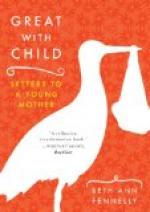Now is it probable—nay, is it possible—that the lungs, especially those of young persons, can expand and come to their full and natural size under pressure, even though the pressure should be slight? Must they not be weakened? And if the pressure be strong, as it sometimes is, must they not dwindle away?
We know, too, from the nature and structure of the lungs themselves, that tight lacing must injure them. Many mothers have very imperfect notions of what physicians mean, when they say that corsets impede the circulation, by preventing the full and undisturbed action of the lungs. They get no higher ideas of the motion of the chest, than what is connected with bending the body forward and backward, from right to left, &c. They know that, if dressed too tightly, this motion is not so free as it otherwise would be; but if they are not so closely laced as to prevent that free bending of the body of which I have been speaking, they think there can be no danger; or at least, none of consequence.
Now it happens that this sort of motion is not that to which physicians refer, when they complain of corsets. Strictly speaking, this bending of the whole body is performed by the muscles of the back, and not those of the chest. The latter have very little to do with it. It is true, that even this motion ought not to be hindered; but if it is, the evil is one of little comparative magnitude.
Every time we breathe naturally, all the ribs, together with the breast bone, have motion. The ribs rise, and spread a little outward, especially towards the fore part. The breast bone not only rises, but swings forward a little, like a pendulum. But the moment the chest is swathed or bandaged, this motion must be hindered; and the more, in proportion to the tightness.
On this point, those persons make a sad mistake, who say that “a busk not too wide nor too rigid seems to correspond to the supporting spine, and to assist, rather than impede the efforts of nature, to keep the body erect.”
Can we seriously compare the offices of the spine with those of the ribs, and suppose that because the former is fixed like a post, at the back part of the lungs, therefore an artificial post in front would be useful? Why, we might just as well argue in favor of hanging weights to a door, or a clog to a pendulum, in order to make it swing backwards and forwards more easily. We might almost as well say that the elbow ought to be made firm, to correspond with the shoulders, and thus become advocates for letting the stays or bandages enclose the arm above the elbow, and fasten it firmly to the side. Indeed, the consequences in the latter case, aside from a little inconvenience, would not be half so destructive to health as in the former. The ribs, where they join to the back bone, form hinges; and hinges are made for motion. But if you fasten them to a post in front, of what value are the hinges?




